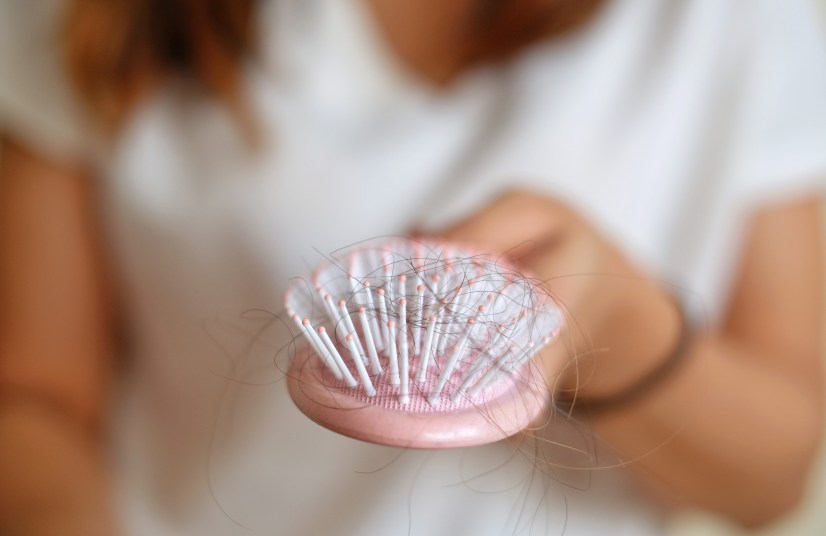This Sneaky Sign May Mean You’re Deficient in Vitamin D
Plus, what to do about it.

Getting enough vitamins and nutrients is one of the main ways we can protect ourselves from disease and illness as we get older. But when it comes to knowing exactly how much you need, things can get a bit tricky. Luckily, there are some symptoms you can look out for which may signal that you might need more of a certain nutrient. When it comes to vitamin D, hair loss could indicate that you’re deficient!
Vitamin D is one of the most important nutrients for your body as you age. Unfortunately, many folks are deficient. Vitamin D is essential for sturdy bones, radiant skin, and optimal immune health, and it even plays a role in the body’s regulation of insulin. Not only that, but getting more vitamin D has shown to help ward off conditions like heart disease, osteoporosis, and even depression.
The Vitamin D-Hair Loss Connection
Low levels of this crucial nutrient has been linked with a host of conditions including low bone density, softening bones, osteoarthritis, and cancer. What you may not know is that deficiency in vitamin D can also cause hair loss.
Vitamin D plays an important role in stimulating your hair follicles. This includes hair follicles that already exist as well as stimulating the growth of new ones. Studies show that low levels of vitamin D can in fact cause hair loss. Furthermore, deficiency in vitamin D has also been linked to alopecia, a condition which causes bald patches on the scalp and other areas in both men and women.
Other symptoms of a vitamin D deficiency include fatigue, aches and pains, low immunity (for example, getting sick often), pain in your muscles and joints that cause disorientation and lack of balance, stress fractures, and frequent blue moods. If you think you could be lacking vitamin D, talk to your doctor and consider adding more of it to your daily diet.
So how much vitamin D do you need, exactly? The recommended daily intake for vitamin D is around 15 micrograms. You can get more vitamin D in your diet by taking a supplement, like this one from Nature Wise ($12.49, Amazon), but be sure to get your doctor’s OK before starting. Otherwise, natural sources of vitamin D include sunlight (aim for 15 minutes of sunlight on your skin per day), vitamin D rich foods like fatty fish (salmon, mackerel, etc), or fortified foods like milk and orange juice.
Here’s to radiant beauty and optimal health!













